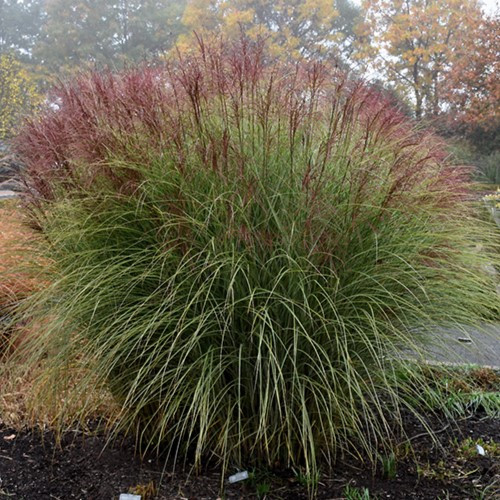| Deschampsia cespitosa 'Northern Lights' |
USDA Zone: 4-8 |
Northern Lights Tufted Hair Grass's attractive grassy leaves are green in colour with showy creamy white variegation and tinges of pink on a plant with a mounded habit of growth. As an added bonus, the foliage turns a gorgeous pink in the fall. It features subtle spikes of tan flowers rising above the foliage in mid summer.
Grown for it's grassy variegated foliage in green and cream, tinged with pink in cooler weather; beautiful accent in containers; smaller plant also good in borders and smaller spaces.
Northern Lights Tufted Hair Grass is recommended for the following landscape applications;
- Mass Planting
- Rock/Alpine Gardens
- Border Edging
- General Garden Use
- Groundcover
- Container Planting
Low Maintenance
Common Name: Tufted Hair Grass
|
Key Feature
|
Light Needs | Landscape Uses |
 |
 |
|
|
|
|
| More About Northern Lights Tufted Hair Grass |
| Height: 10-16 inches |
Spread: 16 inches |
Flower Colour: Tan Shades |
|
Northern Lights Tufted Hair Grass does best in full sun to partial shade. It prefers to grow in average to moist conditions, and shouldn't be allowed to dry out. It is not particular as to soil type, but has a definite preference for acidic soils. It is somewhat tolerant of urban pollution. Consider covering it with a thick layer of mulch in winter to protect it in exposed locations. Cool Season Grasses: These grasses do the majority of their growing in early spring and start again when temperatures start to cool in the fall. During the warmer summer months, they stop growing and some will even go dormant. Cool season grasses flower in the spring or early summer. Most cool season grasses grow best in a consistently moist soil. Northern Lights Tufted Hair Grass is a fine choice for the garden, but it is also a good selection for planting in outdoor pots and containers. Because of its height, it is often used as a 'thriller' in the 'spiller-thriller-filler' container combination; plant it near the center of the pot, surrounded by smaller plants and those that spill over the edges. It is even sizeable enough that it can be grown alone in a suitable container. Note that when grown in a container, it may not perform exactly as indicated on the tag - this is to be expected. Also note that when growing plants in outdoor containers and baskets, they may require more frequent waterings than they would in the yard or garden. Be aware that in our climate, most plants cannot be expected to survive the winter if left in containers outdoors, and this plant is no exception. NOTE: Some flowers and plants may be harmful or poisonous to people or pets if touched or ingested. If you require more information before placing an order, please let us know in advance. |










